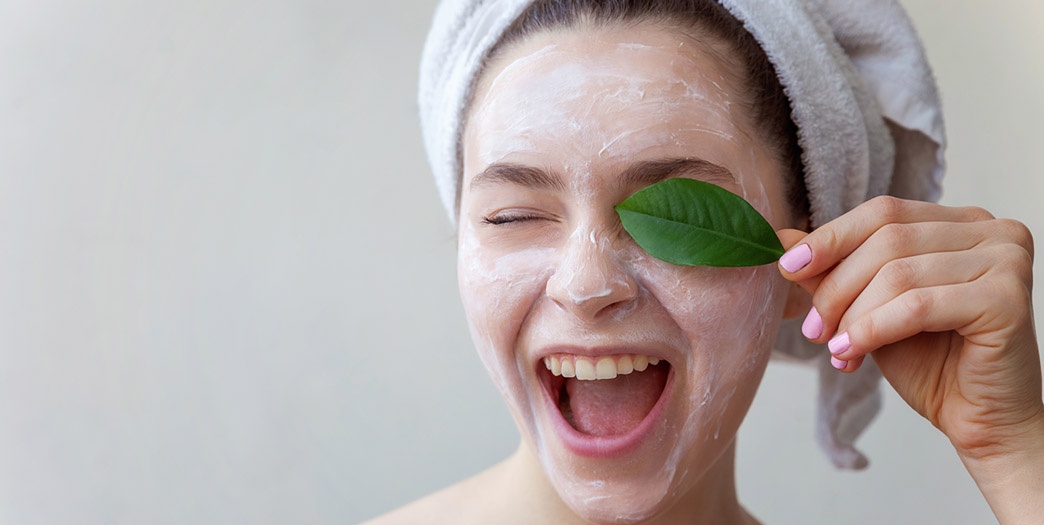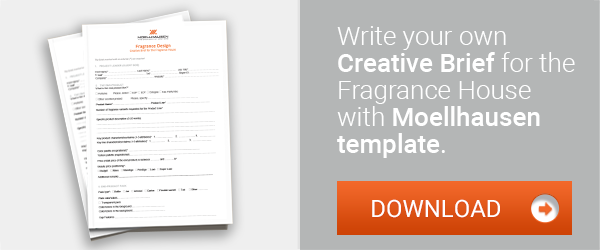
Personal care products: A scented beauty
When we look for a personal care product, we really search for much more than just a function. The selection of personal care products implies considering a range of aspects related to the product promises, the product image — e.g. the packaging and the name, the brand, the store that sells it— and the actual ingredients.
Looking closer, it may be surprising that, when choosing personal care products, the scent is one of the most important qualities customer consider. A research by Euromonitor shows that fragrance is a key factor worldwide. While playing a secondary role behind overall function in all personal care markets, a pleasant scent seems to be one of the most important prerequisites for consumers’ search when buying a beauty product. This is because smell is a huge part of how the consumer experiences the product, and because a multi-sensorial experience provides cross-linked and all-encompassing feelings and memories into users.
A Mintel survey about the personalization of beauty and grooming products reports that 26% of interviewees would be most interested in being able to personalize the fragrance.
A deeper analysis of the future generation of consumers highlights the importance of the fragrance in the personal care industry: 60% of younger iGens cite “to smell good” as the reason they use personal care product (survey done on a base of 1330 internet users aged 10-17, who use beauty products). When breaking down younger iGens by gender, it turns out that 58% of female and 68% of male cite scent as a reason for using beauty or personal care products. Therefore, scent is not a key differentiator across genders, as the desire to smell good is almost equal for both women and men.
Considering this, “the fragrance is more than merely a way to mask unpleasant odors from chemicals” (Euromonitor, 2017) — and it becomes an ingredient of primary importance in the beauty industry. An unappealing fragrance can be a serious obstacle in the development of personal care products.
Opportunities and challenges of the fragrance market in personal care
The fragrance market in personal care is set to grow. According to Euromonitor, usage of fragrance in personal care application totaled 105,000 tons in 2016, representing almost a quarter of total fragrance volume. Sales increased at a CAGR of 2.3% over 2011-2016 and are set to maintain this level over 2016-2021. The strongest growth over the last five years has been generated by Asian countries, including Indonesia, India, Vietnam and South Korea.
Considering new launches of personal care products registered worldwide by Mintel in the last 12 months (Mintel representative sample), more that 95% are scented and labelled with fragrances. Less than 4,2% of products are claimed as fragrance-free, while — for the sake of truth— within this group, the 88% actually contain ingredients commonly used in fragrance formulations.
Bath and shower is the largest personal care application for fragrances in every region of the world, counting for 46% of total volume in 2016. Other important areas are hair care and deodorants. Hair care ranks the second place in most regions, while deodorants are most important in developed markets.
The challenge of this growing market seems to be succeeding in selecting the most suitable fragrance for personal care products. To simplify the dilemma, it is possible to analyze if certain fragrances perform better in certain products: according to Mintel (reference period 2017-2018), gourmand/edible, green/herbal/woody and floral are the most common fragrance families (44,6% of the sample) across skin care and soap & bath products categories. In the hair care category, green/herbal/woody, gourmand/edible and floral are the most represented families (48,3% of the sample); while in deodorant category, fantasy, fresh & clean and green/herbal/woody rank respectively the first three places (47,6% of the sample).
Let’s cast a glance over the most common notes within the mentioned fragrance groups:
1. Green/ Herbal/ Woody
Generally, this fragrance group expresses invigorating and stress-relieving sensations associated with the idea of outdoors experience, vacations, freedom, freshness, spring and youth.
Contrary to what can be imagined, three mostly “imaginative” fragrance notes — specially Aloe, Argan and Shea butter— characterize the product launched in the last 12 months. It can be estimated that over 19% of products launched in this period are characterized by an “Aloe alike” note; from 10% to 12% by “Argan alike” note; over 5% by “Shea butter alike” note.
2. Floral
The notes of this fragrance family convey the idea of luxury, feminine kindness and sophisticated character.
The notes that rank respectively the first three places (in 2017-2018) are Rose (contained in 18% of products), flower/floral (in 13% of products) and Lavender (in 12% of products).
3. Gourmand/Edible
The so-called “foodie” notes. They refer to the hedonistic world of foods and drinks consumed in special occasions and free time. This family include vanilla, almond, sweet, nuts and toasted notes. The most representative note of this family is Coconut (contained within 18% of products). The reference period is 2017-2018.
4. Taking conscious decisions about fragrances
In the personal care market, scent plays a significant role, helping to position the product and to enhance the overall sensory experience. Developing the right fragrance for personal care products requires the perfect matching of olfactory notes with a clear end-product concept. The general interpretation and acceptance of specific olfactory notes has to be explored and analyzed taking advantage of the most comprehensive data about the specific market, the target consumer, the characteristics of product benchmarks, and more.
For designing a distinctive fragrance able to capture the brand essence and back the product promises, the access to consistent analytics tools and the marketing intelligence of the fragrance house can be key resources, necessary to make choices with higher chance of success.
Sources:
- Moellhausen MKTG statistics and research
- Euromonitor and Euromonitor insight “Fragrance in beauty and personal care: Selling with scent” (2017)
- Mintel GNPD
- Mintel report “Personalization in Beauty – UK" (June 2018)
- Mintel report “The iGen Beauty Consumer – US" (March 2018)
Although the information contained in this document is presented in good faith and believed to be correct, Moellhausen makes no representations or warranties as to the completeness or accuracy of the information. This document is provided on an “as is” basis. No representations or warranties, either express or implied, of fitness for a particular purpose are made herein with respect to information or products to which information refers. Moellhausen shall not be liable for any irresponsible, improper or illegal use, direct or indirect, of the information or the products represented herein and it shall not be liable for any damage arising from any use in connection therewith.
©Copyright 2018, by Moellhausen S.p.A – All Rights Reserved. Any review, retransmission, spreading or other unauthorized use of, or taking of any action in reliance upon, this information is prohibited.




